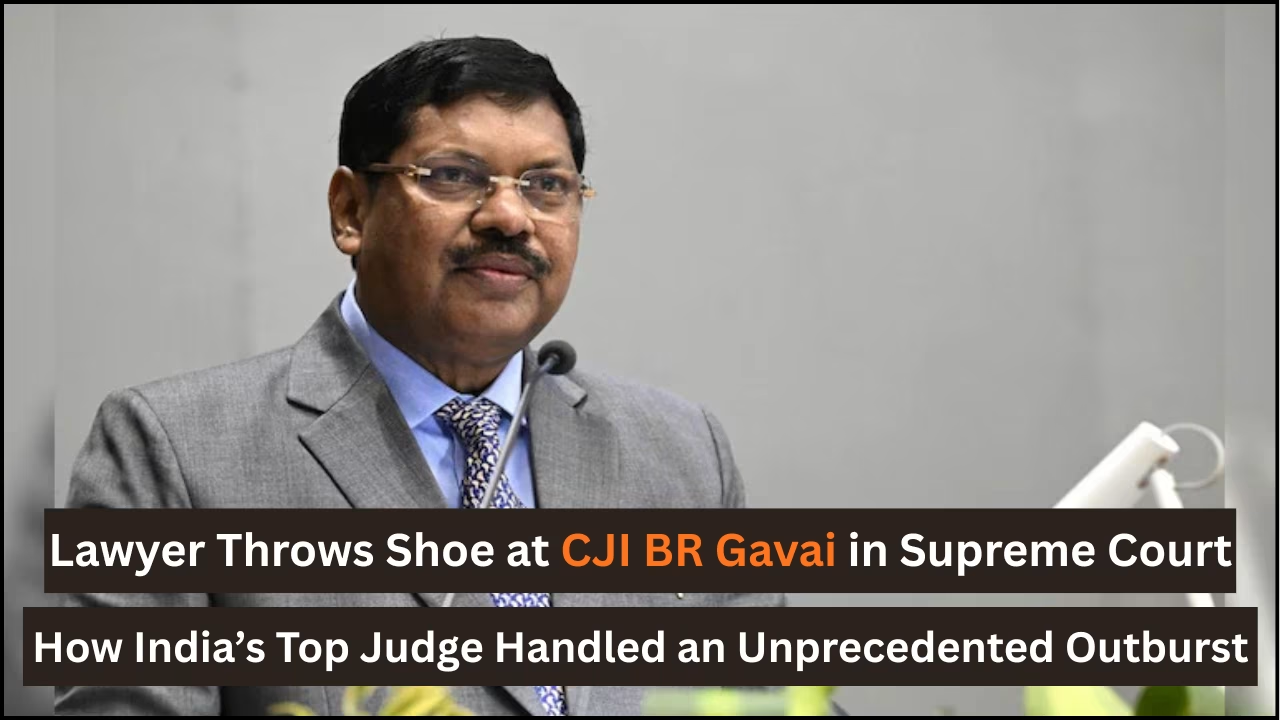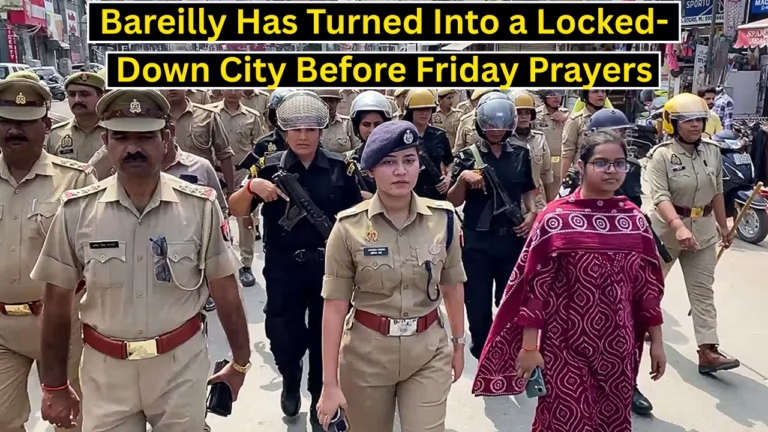
A dramatic moment inside India’s Supreme Court as a lawyer hurls a shoe toward Chief Justice BR Gavai, sparking security action.
Published on: October 6, 2025 at 14:49

It was supposed to be an ordinary Monday morning inside the Supreme Court of India, but what followed stunned everyone present in Court No. 1.
A 71-year-old advocate suddenly hurled his shoe toward Chief Justice of India BR Gavai, shouting “Sanatan ka apmaan nahi sahenge” — “We won’t tolerate the insult of Sanatan Dharma.”
The courtroom, usually a space of logic and decorum, witnessed a rare act of outrage that blended faith, emotion, and protest. Security officers rushed in, subdued the man, and escorted him out — but what stood out wasn’t the chaos. It was CJI Gavai’s calm, unshaken response.
This shocking incident has reignited conversations about judicial dignity, religious sensitivity, and the growing tension between belief and law.
Let’s unpack what really happened, why it matters, and what it says about India’s justice system — and about us as a society.
The Supreme Court Shock: How the Incident Unfolded
According to multiple reports by The Indian Express and NDTV, the incident occurred during an ongoing hearing when a senior lawyer, identified as Ravi Sharma (name changed for privacy), stood up in the packed courtroom and shouted religious slogans.
Witnesses say he appeared agitated, accusing the Chief Justice of “hurting religious sentiments” through his earlier remarks made during a hearing about the Khajuraho Vishnu idol restoration case. In that earlier hearing, CJI Gavai had remarked, “Go and ask the deity itself,” in response to the petitioner’s plea — a comment some perceived as dismissive of faith.
Within seconds, the lawyer pulled off his shoe and threw it toward the bench. The object missed the Chief Justice, and security personnel immediately detained the man.
The courtroom fell silent.
But instead of anger or disruption, CJI Gavai chose composure over confrontation.
He looked up calmly and said,
“Don’t get distracted by all this. These things do not affect me.”
The proceedings resumed — an extraordinary display of judicial poise in the face of provocation.
That single moment said more about the strength of leadership than any lecture on discipline ever could.
CJI Gavai’s Calm Reaction: Leadership in the Face of Chaos
If there’s one image that defines this incident, it’s not of the flying shoe — but of the Chief Justice sitting unshaken, maintaining both dignity and direction.
Observers have noted that CJI BR Gavai, who hails from Maharashtra and has spent decades in the judiciary, has always been known for his calm demeanor and pragmatic judgments.
His response — “These things do not affect me” — wasn’t just a statement. It was a reflection of judicial resilience. In a country where judges often face immense scrutiny, personal attacks, and social media outrage, remaining composed under pressure is a mark of strength.
The Chief Justice’s reaction reminded many of former CJI Ranjan Gogoi’s response to similar disruptions and CJI DY Chandrachud’s poise during emotionally charged hearings.
The message was clear:
The Supreme Court will not bend under pressure — emotional, political, or religious.
However, the incident has also sparked serious security concerns within the judiciary. How did someone manage to bring an object like a shoe so close to the Chief Justice?
Officials have confirmed that security measures inside the courtroom are being reviewed and that additional screening procedures may be introduced.
But beyond the physical breach, what stands exposed is the growing emotional polarization in society — where even courtrooms aren’t immune to ideological outbursts.
Also Read| Why Rajnath Singh Said ‘One Route to Karachi Passes Through Sir Creek’ — A Big Signal to Pakistan
Religion, Sensitivity, and the Thin Line of Judicial Expression

This incident raises a deeper question — one that India has struggled with for decades:
How does the judiciary balance secular law with religious emotion?
The judiciary, by nature, must remain neutral and fact-driven. But when cases involve faith — whether it’s the Ram Janmabhoomi dispute, Sabarimala entry case, or now, idol restoration petitions — even a passing remark from a judge can be amplified into a controversy.
CJI Gavai’s comment during the earlier hearing was perhaps meant humorously or contextually, but once taken out of its setting, it was portrayed as “insensitive.”
The result? Outrage, headlines, and eventually, an emotional outburst that reached the courtroom floor.
As someone who follows Indian judiciary closely, I personally see this as a reflection of our times — where context gets lost, and emotion takes center stage.
It’s a reminder that words, even from the country’s highest judicial chair, can be misinterpreted when public trust is fragile.
At the same time, one cannot overlook that respect for judicial institutions is the foundation of democracy.
Throwing a shoe inside the Supreme Court isn’t protest — it’s contempt of law itself. There are ways to express dissent — petitions, reviews, public debate — but violence, even symbolic, undermines the very justice we seek to defend.
Calm in the Storm — A Lesson Beyond the Courtroom
The “shoe incident” at the Supreme Court will be remembered not for the act of defiance, but for the graceful restraint of the Chief Justice.
CJI BR Gavai didn’t just continue the hearing — he set a standard for leadership under provocation.
In an era of instant outrage and reactionary anger, his composure reminds us that real strength lies in staying calm when everyone expects chaos.
Personally, I find this incident deeply symbolic. It tells us that faith and justice don’t have to be enemies — they just need understanding.
The lawyer’s emotions were real, but so was the Chief Justice’s dignity. Between the two lies the lesson India must learn:
Passion should never overpower reason — especially in the house of law.
As the investigation proceeds, one hopes this episode becomes more than a trending headline — that it sparks introspection about how we, as citizens, engage with our institutions.
Because at the end of the day, respect for law isn’t about reverence for authority — it’s about believing that justice, no matter how flawed, is still our best hope for peace.






